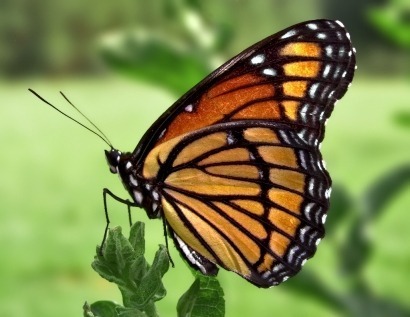
Bogdan Andrei from Romania is an inventor who describes himself as “a non-conformist thinker, which allows him to find solutions to different mechanical problems. Along with his brother, he has invented and applied for an international patent (pending) for what could be the most efficient hydroelectric turbine.
The story started a year ago when Bogdan was talking with his brother about renewable energy and the technologies used. “We agreed that there is huge potential and I told him: ‘But I have something which could be used to harness the water in streams’”.
Bogdan’s concept was inspired by a butterfly, which when it has its wings closed is able to stand without getting blown away by the wind, but on opening its wings can fly even in low winds.
He saw that there was an opportunity to develop a small hydro turbine which could expose a maximum surface when in the direction of the flow, and alternatively have a slim profile when against the flow direction.
“My brother said ‘OK let's try making a prototype’, so we did. The first prototype showed us that we had a viable concept and so we start refining the work and improved the design,” Bogdan explained to Renewable Energy Magazine recently.
The Andrei brothers now have a refined design and are looking for investors to build an industrial prototype of 2m diameter and minimum 10 kW/h. The product is a slow turbine with folding wings ranging in sizes from 2 metres in diameter up to 40 metres in diameter. According to its size and stream speed, it can carry power generators from 10 KW/hour to 200 MW/hour.
“We have been trying to find an investor for more than a year but no result. Even all the people who have seen the prototype and the simulation have admitted that we have a one of a kind turbine,” says Bogdan.
“Lately, there has been a lot of news and articles on the Internet describing the same situation: VCs are reluctant to invest in new technologies (no matter the field) and ask for the entrepreneur/inventor to be ‘revenue ready’, and almost all analysts, bloggers, and authors have advised fund seekers to redirect their target to crowdfunding platforms;” Bogdan highlights.
“A few fundraising campaigns of this type have been a tremendous success so we decided to follow this path,” concludes Bogdan.
The Andrei borthers are looking to raise $300,000 which will be used as follow:
“Basically the prototype should be ready for testing in about 45-60 days from the campaign deadline and all of our backers will be informed about progresses we made,” says Bogdan.
Bogdan is hoping this article will raise awareness of his invention and encourages readers to spread the word by sharing or re-tweeting this piece. Of course, he is also looking for investors however large or small.
For additional information:

